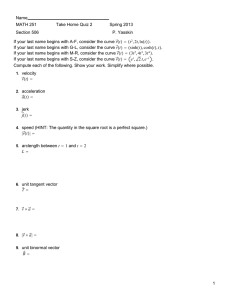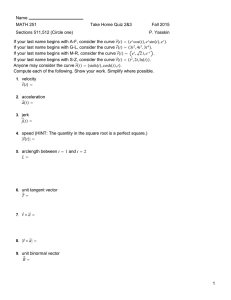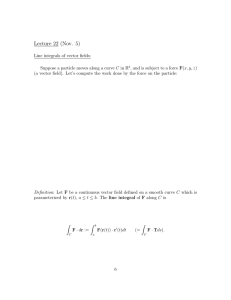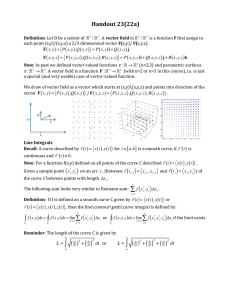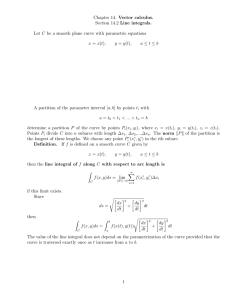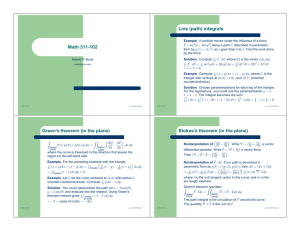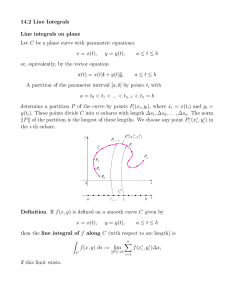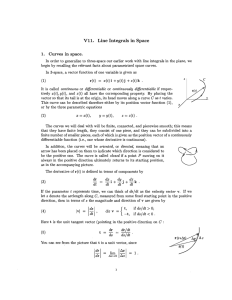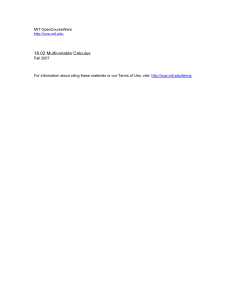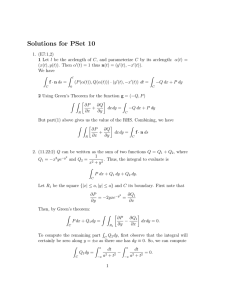du
advertisement
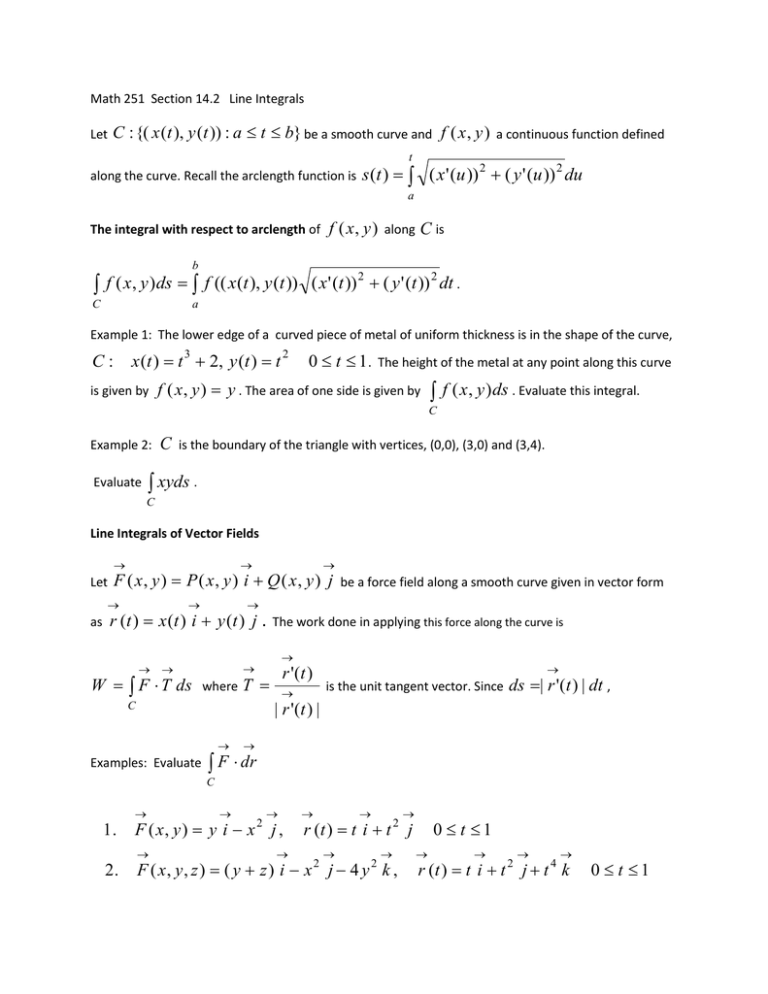
Math 251 Section 14.2 Line Integrals
Let
C : {( x (t ), y (t )) : a t b} be a smooth curve and f ( x , y ) a continuous function defined
t
along the curve. Recall the arclength function is
s (t ) ( x ' (u )) 2 ( y ' (u )) 2 du
a
The integral with respect to arclength of
f ( x , y ) along C is
b
2
2
f ( x, y ) ds f (( x (t ), y (t )) ( x ' (t )) ( y ' (t )) dt .
C
a
Example 1: The lower edge of a curved piece of metal of uniform thickness is in the shape of the curve,
x ( t ) t 3 2, y ( t ) t 2
C:
is given by
0 t 1.
The height of the metal at any point along this curve
f ( x , y ) y . The area of one side is given by
f ( x, y ) ds . Evaluate this integral.
C
Example 2:
Evaluate
C
is the boundary of the triangle with vertices, (0,0), (3,0) and (3,4).
xyds .
C
Line Integrals of Vector Fields
Let
as
F ( x, y ) P ( x, y ) i Q ( x, y ) j
r (t ) x (t ) i y (t ) j
. The work done in applying this force along the curve is
W F T ds
be a force field along a smooth curve given in vector form
where
r '(t )
T
C
is the unit tangent vector. Since
ds | r '(t ) | dt ,
| r '(t ) |
Examples: Evaluate
F dr
C
1.
F ( x, y ) y i x j ,
2.
F ( x, y , z ) ( y z ) i x 2 j 4 y 2 k ,
2
r (t ) t i t j
2
0 t 1
r (t ) t i t 2 j t 4 k
0 t 1
Note:
F dr P ( x (t ), y (t )) x ' (t ) dt Q (( x (t ), y (t )) y ' (t ) dt Pdx Qdy
C
C
C
b
We define
Pdx P ( x (t ), y (t )) x ' (t ) dt
C
a
b
and
Qdy Q ( x (t ), y (t )) y ' (t ) dt
C
a

